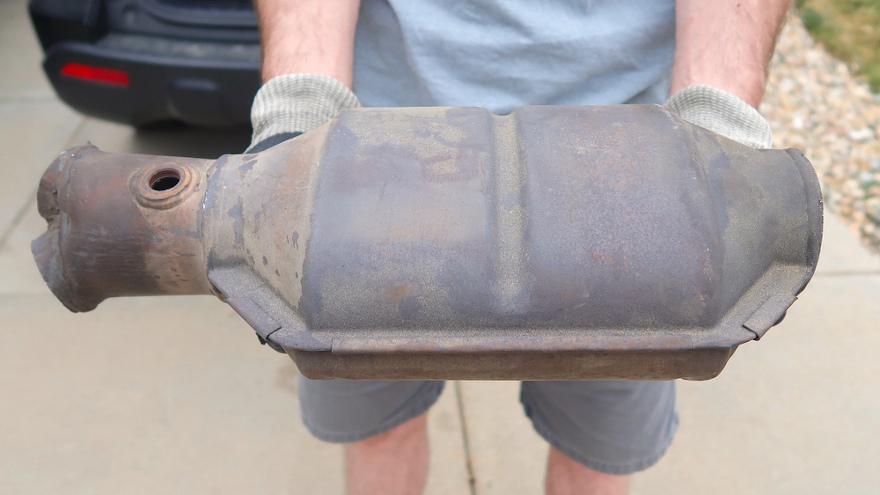Church Mutual shares loss data as catalytic convertor theft continues

Image by Red Herring / Shutterstock.com
As a bipartisan proposal sits on Capitol Hill to combat rising catalytic convertor theft in the U.S., Church Mutual Insurance Co. offered more data and dollar figures on Tuesday to illustrate how much of a problem it is.
The insurer of non-profits, schools and houses of worship said it has covered nearly $3 million in catalytic converter thefts during the past three-and-a-half years. The number of claims increased from 52 in 2018 to 1,095 in 2021, a 2,000% increase.
“In addition to private passenger vehicles, thieves are also targeting cars, buses and other vehicles used by non-profits, schools, houses of worship and other organizations,” Church Mutual said in a news release. “Thefts result in costly damage, added time and resources to repair, and disruption of customer and member services.”
According to a news release distributed in May by CARFAX, the National Insurance Crime Bureau, which tracks thefts reported to insurance companies, says the number of catalytic convertor theft reports increased about 977% from 2018 to more than 14,000 in 2020, the most recent year for which overall data is available.
Later that month, The National Automobile Dealers Association, joined by 12 industry partners, sent a letter to U.S. House Energy and Commerce Committee Chairman Frank Pallone (D-N.J.) and Ranking Member Cathy McMorris Rodgers (R-Wash.) in support of H.R. 6394, a bipartisan bill to combat rising catalytic convertor theft in the U.S.
According to an NADA news release, the “Preventing Auto Recycling Theft (PART) Act” is the first congressional proposal to address the growing national problem of catalytic converter thefts, which are costing businesses and vehicle owners millions of dollars annually.
“Catalytic convertor theft is a major concern for dealers nationwide,” NADA president and chief executive officer Mike Stanton said in the news release. “The PART Act would help deter catalytic converter thefts that are impacting dealerships, fleet businesses and consumers alike.”
In the meantime, Church Mutual offered five suggestions that might help dealerships and nonprofits, including:
—Park defensively: Keep vehicles locked and parked in a secure, well-lit area when not in use. If a garage is available, park the vehicle inside. Park close to building entrances where someone may be able to spot suspicious activity. Parking close to walls or fences can also impede access to the vehicle from underneath.
—Keep an eye on things: Use security surveillance cameras in the area where vehicles are parked. Cameras alone can serve as a visual deterrent, but they also provide valuable footage should a catalytic converter be stolen. If you don’t use a vehicle daily, make it a point to check on it regularly.
—Equip vehicles with added protection: Determine whether having a catalytic converter welded in place and/or placing a protective cover around it is necessary. Aftermarket products such as catalytic converter-specific locks, clamps, cages and alarms are commercially available.
—Use an existing vehicle alarm to alert of potential theft: Adjust or calibrate the sensitivity of your vehicle’s alarm, if applicable, so vibration will activate the alarm.
—Drive down the resale value: Engrave the vehicle identification number (VIN) on the catalytic converter and/or spray it with high temperature fluorescent paint. This deters theft since a marked part is less attractive to scrap metal dealers.
“Vigilance and preparedness are key to protecting against theft,” Church Mutual said. “Take extra precautions with taller vehicles, such as SUVs, trucks and buses. They are often targeted because of easier access to the catalytic converter. Using a wrench or saw, a thief can steal a catalytic converter in just a few minutes.”

 View The Latest Edition
View The Latest Edition

